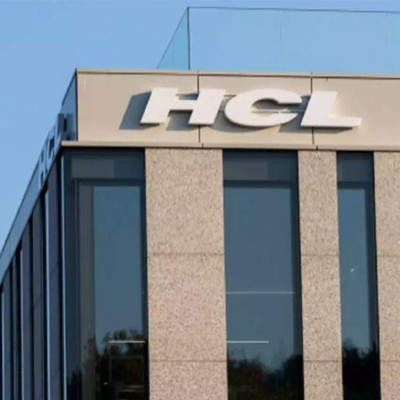Exploring India's Medical Tourism and Transformative Health Tech Landscape
1.jpg)
India's medical tourism sector has experienced rapid growth in recent years, evidenced by a significant rise in foreign visitors from 183,000 in 2020 to 304,000 in 2021. Projections indicate that the medical tourism market is poised for continued expansion, with an expected Compound Annual Growth Rate (CAGR) of over 20% between 2023 and 2027. This growth trajectory is anticipated to propel the market value to more than US$35 billion, a substantial increase from its current standing at US$6 billion.
India has been attracting patients globally with its combination of top-notch healthcare services and affordability. This trend underscores the country's robust healthcare infrastructure and its growing prowess in health technology. In this article, we explore the interplay between medical tourism and transformative technology in India's healthcare sector.
Let’s delve into the symbiotic relationship between medical tourism and transformative technology in India's healthcare sector.
Medical Tourism in India: A Global Hub
India's medical tourism industry has witnessed meteoric growth, driven by a confluence of factors including affordability, internationally accredited hospitals, skilled medical professionals, and diverse treatment options. Patients from across the globe, spanning from the United States and the United Kingdom to the Middle East and Africa, flock to India for a spectrum of procedures encompassing cardiac surgeries, orthopaedic treatments, cosmetic surgeries, and infertility treatments.
One of the pivotal advantages of medical tourism in India lies in its substantial cost savings compared to Western countries. On average, medical procedures in India are substantially more affordable, typically ranging from 60-90% lower than comparable procedures in the United States, all while maintaining high standards of quality. For instance, a heart bypass surgery that might cost upwards of $100,000 in the U.S. could be performed for as little as US$5,000 in India. This affordability, complemented by top-notch healthcare services, renders India an irresistible destination for patients seeking treatment abroad.
Transformative Technology in Indian Healthcare: Revolutionizing Patient Care
India's healthcare landscape is undergoing a technological revolution, with innovations reshaping patient care, diagnosis, and treatment modalities. Technology is redefining the healthcare paradigm in the country.
Telemedicine platforms have gained traction, particularly in rural and remote areas, where access to healthcare services is scant. These platforms facilitate remote consultations with doctors, enabling timely diagnosis and treatment interventions. Moreover, wearable devices armed with sensors enable continuous monitoring of vital signs, empowering individuals to take proactive measures towards their health.
AI and machine learning algorithms are revolutionizing medical imaging analysis, predictive analytics, and personalized medicine. These technologies enhance diagnostic precision, optimize treatment strategies, and augment patient outcomes. Additionally, robotic-assisted surgeries empower surgeons to execute intricate procedures with precision and minimal invasiveness, thereby reducing recovery durations and hospital stays.
The integration of blockchain technology in healthcare is also gaining momentum, offering solutions for secure medical data exchange, patient consent management, and supply chain transparency. Blockchain ensures data integrity and privacy, assuaging concerns about unauthorized access and data breaches.
Generative AI democratizes access to AI applications by generating synthetic data, facilitating the development of healthcare chatbots and virtual assistants. This enhances patient care through swift interpretation of results and personalized treatment recommendations.
Telehealth advances with remote consultations and IoT devices for remote patient diagnosis and monitoring. Virtual hospital wards promise centralized patient monitoring in their homes.
Digital twins optimize healthcare processes by replicating medical devices and simulating facility operations while enhancing personalized medicine by modelling treatment impacts.
Robust cybersecurity measures, powered by AI/ML and blockchain, safeguard patient data integrity and privacy in the digitized healthcare landscape.
Virtual healthcare assistants streamline operations and improve patient engagement by offering personalized advice and seamless access to electronic health records.
Medical Extended Reality (XR), including AR and VR, revolutionizes surgical precision, chronic pain management, and wound care assessment, shaping the future of complex surgeries and telesurgery.
The Future Outlook: Navigating Challenges and Seizing Opportunities
As India continues to invest in healthcare infrastructure and embrace technological innovations, the future outlook for medical tourism and health tech innovation appears propitious. Collaborations between healthcare providers, technology firms, and governmental agencies are fostering an ecosystem conducive to growth and innovation.
However, challenges such as regulatory frameworks, data privacy concerns, and equitable access to healthcare persist. Addressing these challenges will be pivotal in sustaining the momentum of medical tourism and harnessing the full potential of transformative health technologies in India.
Conclusion: Pioneering a Future of Global Healthcare Excellence
India's ascent as a premier destination for medical tourism is intricately intertwined with its transformative health technology landscape. The convergence of affordable healthcare services, cutting-edge technology, and proficient medical professionals has positioned India as a global frontrunner in the healthcare sector. As the country continues to leverage technology to augment healthcare delivery and outcomes, it holds vast potential to shape the future of medical tourism and redefine standards of care on a global scale.
.jpg)
.jpg)
.jpg)
.jpg)



